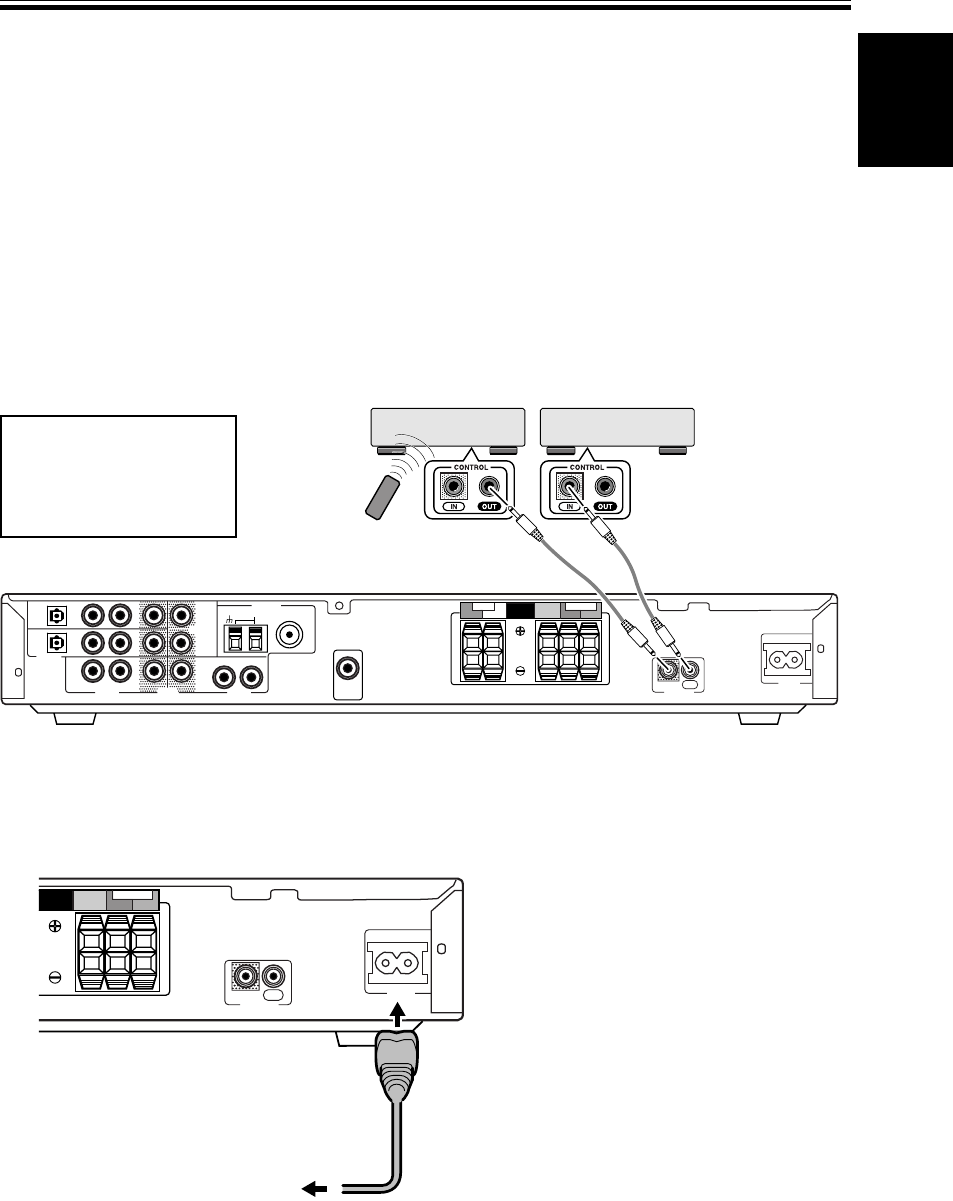
English
17
En
Connecting Your Equipment
SURROUND
RL
CENTER
IN
OUT
CONTROL
AC IN
S
PEAKERS
DVD
IN
VCR
IN
VCR
OUT
MONITOR
OUT
TV/
SAT
IN
DIGITAL
(OPTICAL)
AUDIO AUDIO
FM UNBAL 75Ω
AM LOOP
ANTENNA
VIDEO
RL
1
2
RL
RL
SUB
WOOFER
OUT
FRONT
RL
SURROUND
RL
CENTER
IN
OUT
CONTROL
AC IN
SPEAKERS
Operating other Pioneer Components with this Unit’s Sensor
By connecting a control cord to the CONTROL terminals of the respective equipment, you can control several Pioneer
components using one remote sensor. Following the diagram below you will see that one component feeds the
CONTROL OUT terminal and on the other end another component is connected to the CONTROL IN terminal. The
component that is the end point (the one that has a cord hooked up to its CONTROL OUT only) it is the component
whose sensor you will use. Point the remote control at that sensor when you want operate the any of the equipment
connected by this system. In the example below you would point the remote control unit towards the remote sensor
of the equipment on the left.
MEMO:
• You can also control Pioneer components by pointing the receiver's remote control directly at the component.
This type of operation does not require control cords. See page 41 for more information.
• To use this kind of remote control you have to hook up a control cord AND the have the component and
receiver hooked up with analog RCA audio/video cords as well (see page 11-13).
Plugging in the Receiver
After you have connected all your components, including the speakers, plug the receiver into a wall outlet.
Components
with an Î mark
Components
with an Î mark
Mono mini plug
(optional)
Mono mini plug
(optional)
Point remote control towards
remote sensor of component
that only has a cord connected
to its CONTROL OUT
terminal
MEMO:
• The power cord is removable from main unit for storage.
to wall outlet
Power cord CAUTION!
Handle the power cord by the plug. Do not pull
out the plug by tugging the cord and never
touch the power cord when your hands are wet
as this could cause a short circuit or electric
shock. Do not place the unit or a piece of furni-
ture, etc., on the power cord, or pinch the cord.
Never make a knot in the cord or tie it with
other cords. The power cords should be routed
such that they are not likely to be stepped on.
A damaged power cord can cause a fire or give
you an electrical shock. Check the power cord
once in a while. When you find it damaged,
ask your nearest PIONEER authorized service
center or your dealer for a replacement.


















